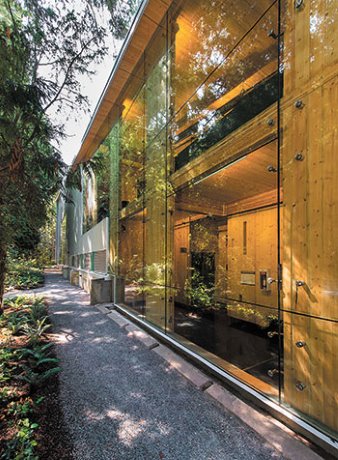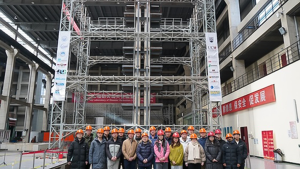The University of British Columbia’s (UBC)Bioenergy Research and Demonstration Facility is one of six Canadian projects that were picked recently as some of the 100 "most innovative and inspiring urban infrastructure projects in the world" in KPMG’s Infrastructure 100: World Cities Edition.
The UBC clean energy project is North America’s first commercial-scale biomass-fueled, cogeneration (heat and power) system that, it is hoped, can operate successfully on a small scale that is suitable for communities the size of UBC.
Most cogeneration facilities are located at large, heat and electricity-hungry industrial installations.
The project is a collaboration of UBC; Nexterra Systems Corp., a Vancouver company that provides energy-from-renewable-waste systems; GE Jenbacher, General Electric’s gas engine division; and FPInnovations, a Canadian forest research organization.
The facility has two operating modes. The commercial mode will use Nexterra gasification technology to convert waste wood into a clean synthesis gas (syngas) that can be used for campus heating.
The second, a demonstration heat-and-power mode will use Nexterra syngas conditioning technology and a GE Jenbacher gas engine to convert syngas into electrical power.
The current method for converting biomass to power combines a biomass combustion system, a steam boiler and a steam turbine.
Although this method is commercially proven, it is typically economically viable only at a scale of more than 30 megawatts.
Because the Nexterra/GE system is more fuel efficient, it is economically viable at a scale of 2 MW to 10 MW, which makes it suitable for smaller-scale applications.
“It’s ideal for communities that want to get off the main power grid,” said Brent Sauder, UBC’s director of the strategic partnerships office.
Until now, the heat requirements of the UBC campus have been filled by burning natural gas.
In thermal mode, the demonstration project will supply 25 per cent of UBC’s average heat requirement.
In cogeneration mode, it will provide 12 per cent of the campus’s average heat and up to 4.5 percent of peak power demand.
The $29 million project had two general contractors: Ledcor Construction Limited, for the base building, and Nexterra for the gasification technology.
The Bioenergy Research and Demonstration Facility is located just east of Marine Drive on the western edge of the UBC campus.
The wedge-shaped building is three stories high and has a footprint of 1,515 square metres.
In addition to the heat and power system, the building contains a control room, lab space and two fuel delivery bays.
Apart from the unique gasification technology which it contains, the facility is noteworthy for its use of wood.
Leung Chow, project architect with McFarland Marceau Architects Ltd. of Vancouver, said the building was conceived by FPInnovations as a pilot demonstration project to showcase cross laminated timber panel (CLT) as an alternative to more traditional construction methods.
“It was thought that, as a demonstration project, further research and development could be encouraged in both gasification and wood technology industries,” Chow said.
CLT panels were used for all load bearing walls and most non-load bearing partitions, suspended floor and roof decks.
Glulam columns connected to glulam beams with steel box connectors formed moment frames with clear spans of 24.5 metres, which were necessary to make room for the installation of the Nexterra equipment.
A total of 410 cubic metres of CLT and 160 cubic metres of glulam columns and beams were used.
“As a pilot project, a learning curve was inevitable for the handling and erection of the panels,” he said.
“But, the few problems that did come up were sorted out (quite quickly). Fire code issues were not as big of a factor as some might expect, as the CLT was accepted as meeting heavy timber fire resistance characteristics. In most cases, the thickness of the panel was enough to meet the fire separation requirements.”
The purpose of the infrastructure awards, said Gary Webster, a partner in KPMG’s Vancouver office, is to promote creative and innovative renewable and sustainable infrastructure, encourage the sharing of lessons learned and promote the use of new technologies.
“By 2050, more than $40 trillion will need to have been spent on infrastructure,” he said.
The projects in KPMG’s Infrastructure 100 were selected by judging panels of independent industry experts from around the world and sorted by category.
The other winning Canadian infrastructure projects were SAIT Polytechnic’s Trades and Technology Complex in Calgary; the Calgary International Airport expansion; Harvest’s Energy Garden in Richmond, BC; the Durham York Energy Centre in Courtice, ON; and Waterfront Toronto.











Recent Comments
comments for this post are closed